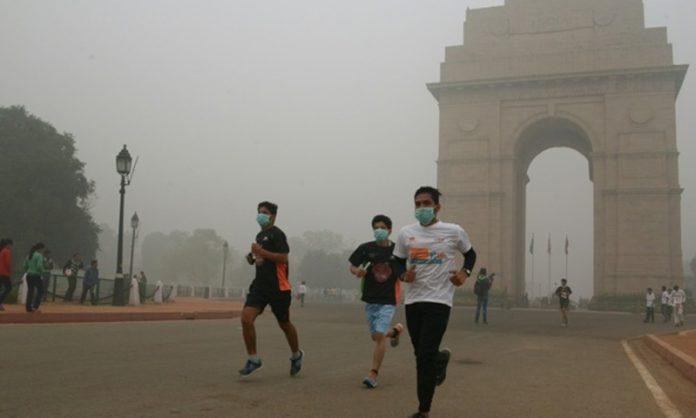NEW DELHI: In the emergency ward of a Delhi hospital, men and women gasp for breath as they wait to be treated for symptoms triggered by the choking blanket of smog that descended on the Indian capital this week.
Doctors at the government-run Vallabhbhai Patel Chest Institute say patient numbers have more than tripled since pollution levels spiked amid a change in weather conditions and the annual post-harvest burning of crop stubble in surrounding areas.
Shopkeeper Manoj Khati said he initially dismissed his heaving cough but it grew gradually worse and he has now been diagnosed with chronic bronchitis.
“For three days I haven’t stopped coughing, I felt as though I would die,” the 46-year-old told AFP as he waited to undergo further tests.
Levels of PM2.5 — the fine pollution particles linked to higher rates of chronic bronchitis, lung cancer and heart disease — regularly topped 500 this week, at one point going over 1,000.
Levels between 301 and 500 are classified as “hazardous,” while anything over 500 is beyond the official index.
The World Health Organization’s guidelines say 25 is the maximum level of PM2.5 anyone can safely be exposed to over a 24-hour period.
Emergency ward doctor Mansi Verma said the hospital had seen a huge spike in patients suffering from respiratory problems.
They are treated with steam inhalation or using nebulizer machines, which provide immediate relief by administering drugs directly to the airways.
“Beginning this week, we are seeing between 250-300 patients, more than three times the usual,” Verma told AFP.
“Most of them suffer from intense coughing and inflammation of the respiratory tract.”
Despite the rise in emergency cases Arvind Kumar, a respiratory diseases specialist at the private Sir Ganga Ram Hospital in Delhi, said many of the worst health effects would not be seen for years to come.
“Pollution kills you slowly,” he said.
“Whatever toxins levels we are exposed to today, suppose it continued for 10 days, this would have shortened the life of each one of us by several days or several weeks.
“But that effect will be noticed many, many years later, so it’s not an immediate killer. And that’s why its potential lethal value is not immediately appreciated, but nonetheless, it’s a lethal killer.”
Delhi is now the world’s most polluted capital according to a World Health Organization survey conducted in 2014, with levels regularly exceeding those in Beijing.
Large swathes of north India and Pakistan see a spike in pollution at the onset of winter due to crop burning and the fact that cooler air traps particulates close to the ground, preventing them from dispersing — a phenomenon known as inversion.
In Delhi, local industry, coal-fired power plants and a growing number of cars on the roads have added to the crisis.
In response, authorities have temporarily closed all schools in the city and announced restrictions on all private cars — an estimated 3 million — from Monday.
But with current levels of pollution, Kumar said, he would not recommend living in the city at all.
“If you worry about your health, you want to have a healthy life… then with the current levels of pollution, I would say Delhi is not a place to live,” he said.





